Road Tripping through Alaska’s National Parks
No Comments
At the beginning of September, I was happy to take a break from “Treasured Lands” and return to Alaska for two weeks. The trip was neatly divided into two parts. Whereas the second week was devoted to two remote parks typical of Alaska, during the first week, I rented a car and drove around, just as one would do in the lower 48s. This hit three out of the four national park roads in Alaska, missing only the Denali Park Road. I am posting a quick overview of the satisfyingly diverse trip, and will dwell more on some highlights later.
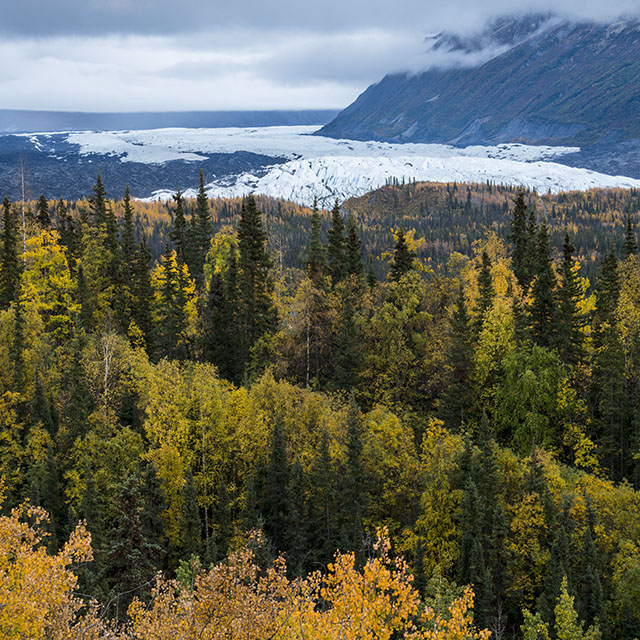
On Monday, it rained solidly upon arrival in Anchorage. My friend Tommy and I initially planned to begin with Kenai Fjords National Park, but instead we changed our plans to visit Wrangell St Elias National Park first, since its interior location would make it less rainy. The drive along the Glenn Highway is one of the most lovely in Alaska, but after the 5:30am start and the long flight, I didn’t feel like photographing in the rain. I thought the day would be total loss, but in the late afternoon, the rain eased enough for shots of the Matanuska Glacier. It is quite amazing to be able to wake up in San Jose, California, and to photograph a glacier in the afternoon!
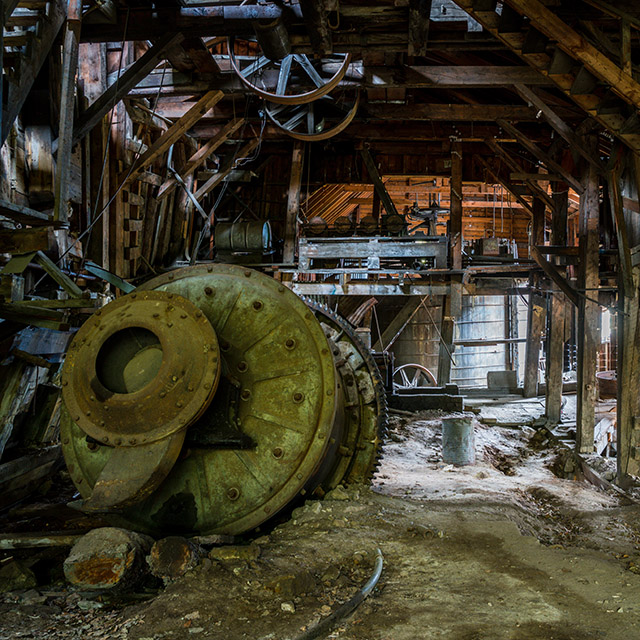
Wrangell St Elias is the only national park in Alaska which is penetrated by two roads. Of the two, the Nabesna road is by far the less traveled. On Tuesday, we woke up at Kendesnii Campground, only one in 13K square-mile Wrangell St Elias National Park, and Brandan Hall joined us to produce footage of me working as part of his upcoming film on the national parks. We spent the whole day exploring the mines and ghost towns at the end of the Nabesna Road. Although those are maybe the most interesting in the North, they are much less known and much more raw than the Kennecott site, and we made incredible discoveries, including mine shafts, a ruined mill with many artifacts still intact inside, and a group of cabins where we found tables strewn with mining documents dating 80 years back.
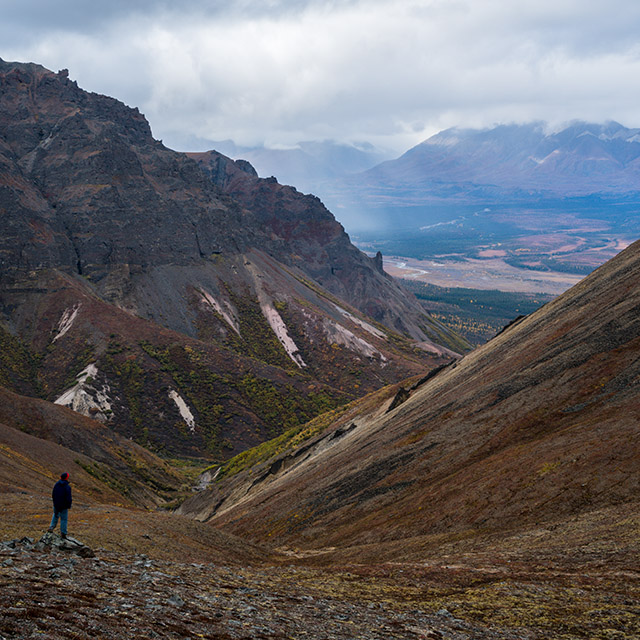
On Wednesday, we hiked the rugged Skookum Volcano Trail from the Nabesna Road. The trail leads to a beautiful high pass through an eroded volcanic system with interesting shapes and colors. The high tundra offered sweeping views and we saw many Dall sheep. At the pass, instead of going back safely, we opted for the unknown and discovery of descending off trail on the other side.
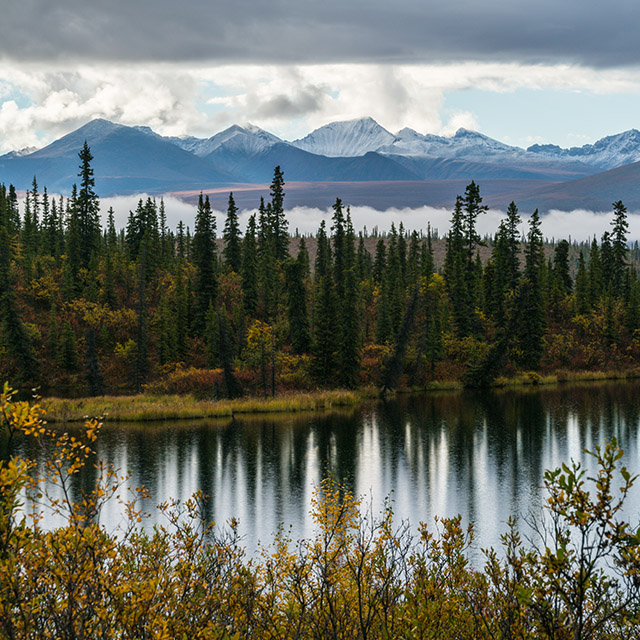
On Thursday, we drove from the Kendesnii Campground to the Mc Carthy footbridge located at the end of the McCarthy Road, enjoying our first day in Alaska with (almost) no rain, and our first view of the Wrangell Mountains, which so far had hidden in the clouds. I was surprised to see how much the Mc Carthy Road, once considered to be one of the worst in Alaska, had improved. In many sections, I could drive at almost normal road speeds.
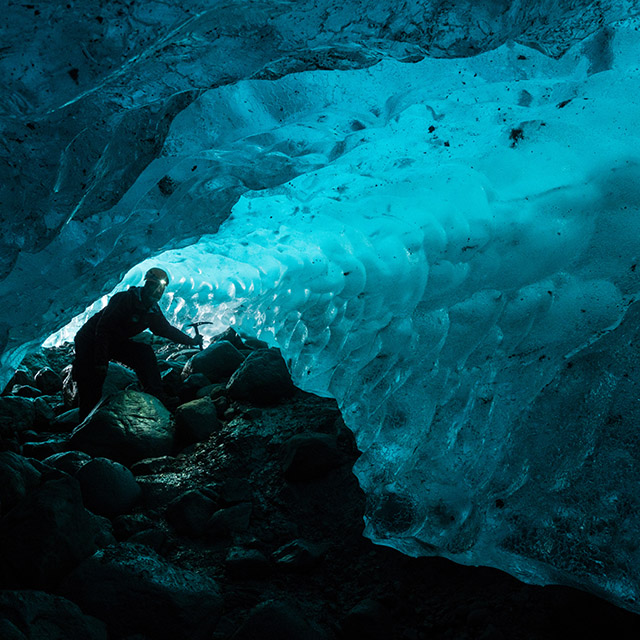
We spent most of Friday exploring the Root Glacier out of Kennecott in Wrangell St Elias National Park. Easy access to a glacier that you can hike is possibly the most remarkable experience to be had in the park. The glacier surface delighted with unexpected features like canyons, and waterfalls, but the most unique experience was to scramble under the edge of the glacier into ice caves where we were underneath surreally blue ice.
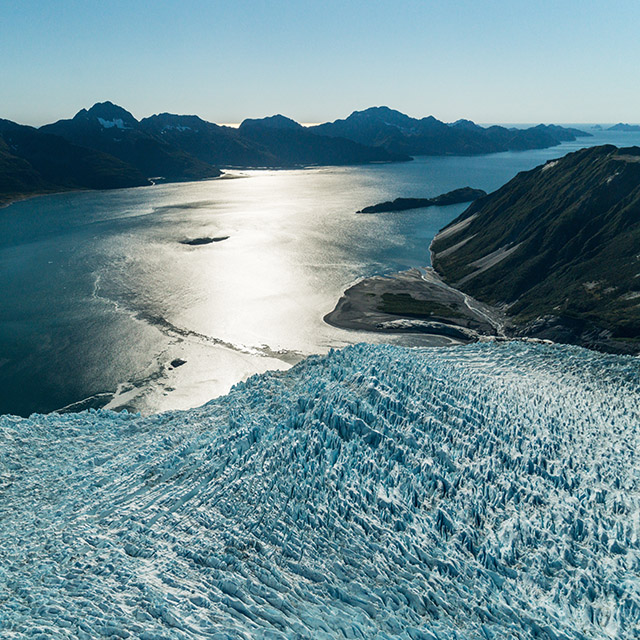
On Saturday, we took advantage of the only sunny day of our first week in Alaska for a flight above Kenai Fjords National Park, and it was in a shining helicopter rather than the usual scrappy Alaskan bush plane. The pilot told me that I could lean out of the door, but when I tried to do so, the winds blew incredibly strong since we were flying fast to make the most of our hour. Even inside the canopy, it was extremely windy, but having the doors off allowed me to shoot backlit without window flare, such as in this shot where the Aialik Fjord waters shimmer.
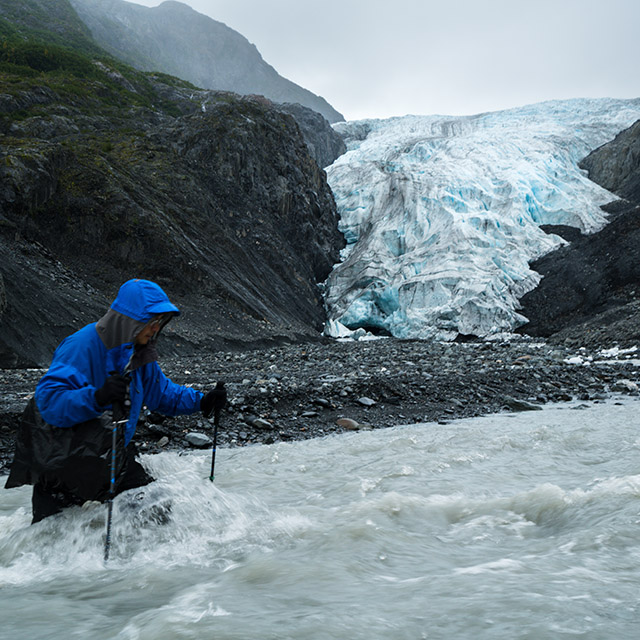
On Sunday, the rain returned, but this set up the perfect mood for exploring the base of Exit Glacier in Kenai Fjords National Park. Since this was my fourth visit to the location, the most accessible of any Alaskan National Park, I didn’t expect much, but I couldn’t believe my eyes when I saw that in less than a decade, the glacier had retreated several hundreds yards and its terminus had changed dramatically. Once a gentle place where you could touch the ice, it was now steep and too dangerous to stand close. To approach it, we had to cross streams where the flow was very swift, more than knee-deep, and glacially (what else to expect ?) frigid.

